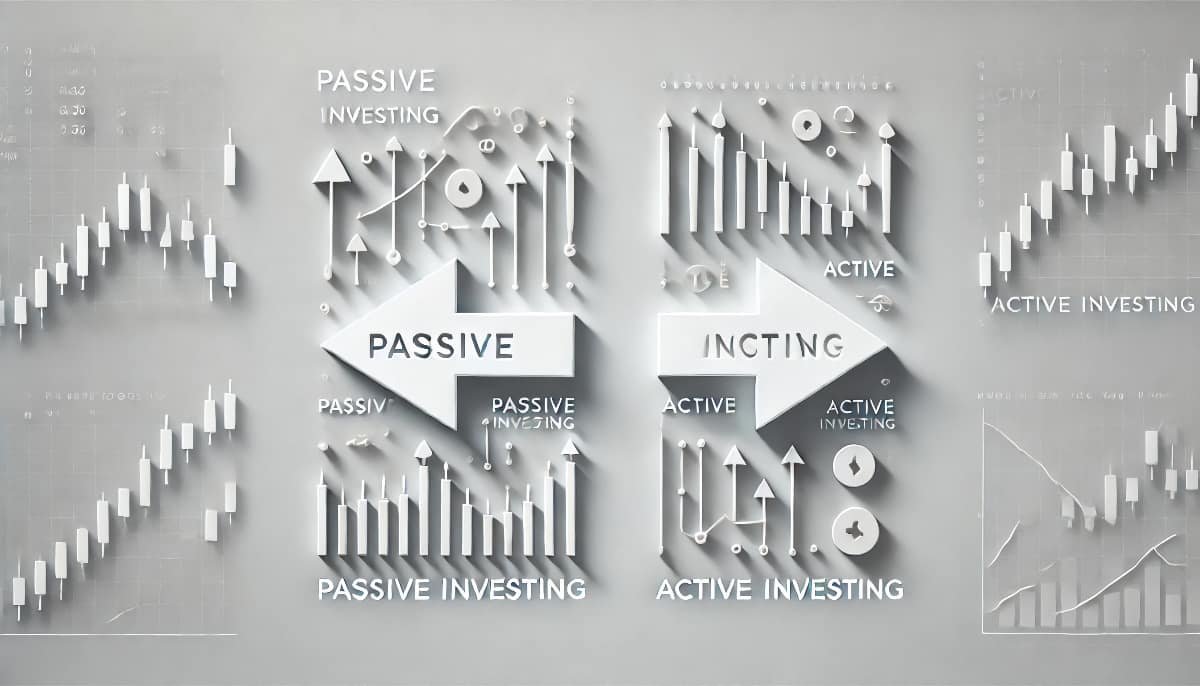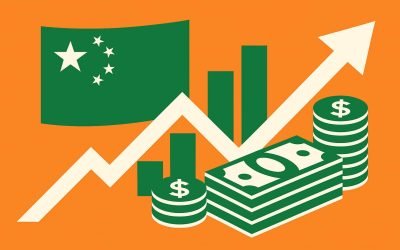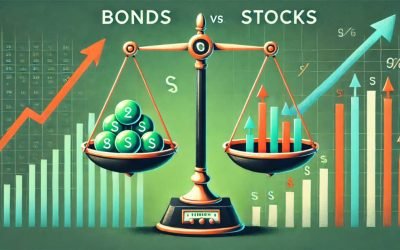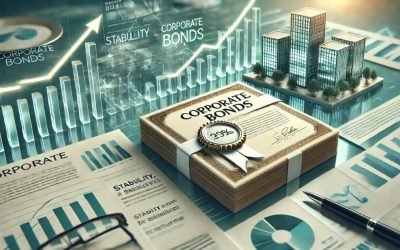Understanding the Basics of Passive and Active Investing
Investing in the stock market can be a daunting task, especially for those who are new to the world of finance. One of the most fundamental decisions an investor must make is whether to adopt a passive or active investing strategy. Both approaches have their merits and drawbacks, and understanding the differences between them is crucial for making informed investment decisions.
What is Passive Investing?
Passive investing is a strategy that aims to replicate the performance of a specific market index, such as the FTSE 100 or the S&P 500. This approach involves buying and holding a diversified portfolio of assets that mirror the components of the chosen index. The primary goal of passive investing is to achieve market returns with minimal effort and lower costs.
Key Characteristics of Passive Investing
- Low Costs: Passive investing typically involves lower fees and expenses compared to active investing. This is because passive funds, such as index funds and exchange-traded funds (ETFs), require less frequent trading and management.
- Long-Term Focus: Passive investors often adopt a long-term perspective, holding their investments for extended periods to benefit from the overall growth of the market.
- Reduced Risk: By diversifying across a broad range of assets, passive investors can mitigate the risk associated with individual stocks or sectors.
- Simplicity: Passive investing is straightforward and requires less time and effort to manage compared to active investing.
What is Active Investing?
Active investing, on the other hand, involves a more hands-on approach to managing investments. Active investors, including fund managers and individual investors, aim to outperform the market by selecting specific stocks, bonds, or other assets based on research, analysis, and market trends. This strategy requires continuous monitoring and frequent trading to capitalize on short-term opportunities.
Key Characteristics of Active Investing
- Higher Costs: Active investing often incurs higher fees and expenses due to the need for professional management, research, and frequent trading.
- Potential for Higher Returns: Active investors seek to outperform the market by identifying undervalued assets or capitalizing on market inefficiencies.
- Increased Risk: The potential for higher returns comes with increased risk, as active investors may make incorrect predictions or face market volatility.
- Complexity: Active investing requires a deep understanding of the market, continuous research, and the ability to make timely decisions.
Comparing Performance: Passive vs Active Investing
One of the most debated topics in the investment community is whether passive or active investing delivers better performance. Numerous studies have been conducted to compare the returns of passive and active strategies, and the results are mixed.
Historical Performance
Historically, passive investing has often outperformed active investing over the long term. This is primarily due to the lower costs associated with passive funds and the difficulty of consistently beating the market. According to a study by S&P Dow Jones Indices, over a 15-year period, more than 90% of actively managed funds underperformed their benchmark indices.
Table: Performance Comparison of Passive and Active Funds
| Time Period | Percentage of Active Funds Underperforming |
|---|---|
| 1 Year | 60% |
| 5 Years | 75% |
| 10 Years | 85% |
| 15 Years | 90% |
Market Conditions and Performance
While passive investing has generally outperformed active investing over the long term, there are certain market conditions where active investing may have an edge. For example, during periods of high market volatility or economic uncertainty, skilled active managers may be able to identify opportunities and make adjustments to their portfolios that passive funds cannot.
Factors Influencing Performance
- Market Efficiency: In highly efficient markets, where information is quickly reflected in asset prices, passive investing tends to perform better. In less efficient markets, active managers may have more opportunities to identify mispriced assets.
- Economic Cycles: During economic downturns or periods of market stress, active managers may be able to protect their portfolios by shifting to defensive assets or sectors.
- Manager Skill: The performance of active investing largely depends on the skill and expertise of the fund manager. Highly skilled managers with a proven track record may be able to consistently outperform the market.
Costs and Fees: A Critical Consideration
One of the most significant differences between passive and active investing is the cost structure. Understanding the impact of fees and expenses on investment returns is crucial for making an informed decision.
Cost Structure of Passive Investing
Passive investing is known for its low-cost structure. Since passive funds aim to replicate the performance of a market index, they require less frequent trading and management. As a result, the fees associated with passive funds, such as index funds and ETFs, are generally lower compared to active funds.
Common Fees in Passive Investing
- Expense Ratios: The expense ratio is the annual fee charged by the fund to cover its operating expenses. Passive funds typically have lower expense ratios compared to active funds.
- Trading Costs: Since passive funds engage in less frequent trading, the associated trading costs are lower.
- Management Fees: Passive funds have lower management fees as they do not require active decision-making and research.
Cost Structure of Active Investing
Active investing involves higher costs due to the need for professional management, research, and frequent trading. These costs can significantly impact the overall returns of an active investment strategy.
Common Fees in Active Investing
- Expense Ratios: Active funds have higher expense ratios to cover the costs of research, analysis, and active management.
- Trading Costs: Frequent trading in active funds leads to higher trading costs, including brokerage fees and bid-ask spreads.
- Management Fees: Active funds charge higher management fees to compensate fund managers for their expertise and efforts.
- Performance Fees: Some active funds charge performance fees based on the fund’s returns, which can further increase the overall cost.
Risk and Return: Balancing the Trade-Off
Investors must carefully consider the trade-off between risk and return when choosing between passive and active investing strategies. Both approaches come with their own set of risks and potential rewards.
Risk in Passive Investing
Passive investing involves replicating the performance of a market index, which means that the investor is exposed to the same risks as the overall market. While diversification helps mitigate some risks, passive investors are still vulnerable to market downturns and economic shocks.
Types of Risks in Passive Investing
- Market Risk: Passive investors are exposed to the overall market risk, which can lead to significant losses during market downturns.
- Tracking Error: Although passive funds aim to replicate the performance of an index, there may be slight deviations due to factors such as fees and trading costs.
- Sector Risk: If a particular sector or industry within the index underperforms, it can negatively impact the overall returns of the passive fund.
Risk in Active Investing
Active investing involves making specific investment decisions based on research and analysis. While this approach offers the potential for higher returns, it also comes with increased risks.
Types of Risks in Active Investing
- Manager Risk: The performance of an active fund largely depends on the skill and expertise of the fund manager. Poor decisions or misjudgments can lead to significant losses.
- Market Timing Risk: Active investors attempt to time the market by buying and selling assets based on short-term trends. Incorrect timing can result in missed opportunities or losses.
- Concentration Risk: Active funds may have a more concentrated portfolio, which increases the risk associated with individual assets or sectors.
Suitability: Which Strategy is Right for You?
The choice between passive and active investing depends on various factors, including an investor’s goals, risk tolerance, time horizon, and investment knowledge. Understanding these factors can help investors determine which strategy aligns best with their needs.
Factors to Consider
- Investment Goals: Investors with long-term goals, such as retirement savings, may prefer passive investing due to its simplicity and lower costs. Those seeking higher returns or willing to take on more risk may opt for active investing.
- Risk Tolerance: Passive investing is generally considered less risky due to its diversification and long-term focus. Active investing may be suitable for investors with a higher risk tolerance and a willingness to accept short-term volatility.
- Time Horizon: Investors with a longer time horizon may benefit from the compounding returns of passive investing. Active investing may be more suitable for those with shorter time horizons or specific financial goals.
- Investment Knowledge: Passive investing requires less expertise and effort, making it suitable for novice investors. Active investing demands a deep understanding of the market and continuous research, which may be more appropriate for experienced investors.
Conclusion: Weighing the Pros and Cons

Both passive and active investing strategies have their advantages and disadvantages. Passive investing offers lower costs, simplicity, and reduced risk, making it an attractive option for long-term investors. Active investing, on the other hand, provides the potential for higher returns and the ability to capitalize on market inefficiencies, but it comes with higher costs and increased risk.
Ultimately, the choice between passive and active investing depends on individual preferences, goals, and circumstances. Some investors may even choose to combine both strategies to diversify their portfolios and balance the trade-offs between risk and return.
Key Takeaways
- Passive investing aims to replicate market performance with lower costs and reduced risk.
- Active investing seeks to outperform the market through research, analysis, and frequent trading.
- Historical data suggests that passive investing often outperforms active investing over the long term.
- Costs and fees are a critical consideration, with passive investing generally being more cost-effective.
- The choice between passive and active investing depends on factors such as investment goals, risk tolerance, time horizon, and investment knowledge.
Q&A Section
Q1: What is the main difference between passive and active investing?
A1: The main difference lies in the approach to managing investments. Passive investing aims to replicate the performance of a market index with minimal effort and lower costs, while active investing involves selecting specific assets to outperform the market through research and frequent trading.
Q2: Why are the costs lower in passive investing?
A2: Passive investing involves less frequent trading and management, resulting in lower fees and expenses. Passive funds, such as index funds and ETFs, have lower expense ratios and management fees compared to active funds.
Q3: Can active investing outperform passive investing?
A3: While active investing has the potential to outperform passive investing, it is challenging to consistently beat the market. Historical data shows that a significant percentage of active funds underperform their benchmark indices over the long term.
Q4: What factors should I consider when choosing between passive and active investing?
A4: Consider factors such as your investment goals, risk tolerance, time horizon, and investment knowledge. Passive investing is generally suitable for long-term goals and lower risk tolerance, while active investing may be appropriate for those seeking higher returns and willing to accept more risk.
Q5: Is it possible to combine both passive and active investing strategies?
A5: Yes, many investors choose to combine both strategies to diversify their portfolios and balance the trade-offs between risk and return. This approach allows investors to benefit from the advantages of both passive and active investing.
Further Reading:
Here are a few insightful articles on the topic of passive vs. active investing:
- Investopedia – “Active vs. Passive Investing: What’s the Difference?” This article explores the fundamental differences between the two strategies, highlighting the cost-effectiveness and long-term focus of passive investing versus the flexibility and potential for higher returns in active investing. It also discusses how passive investing generally incurs lower fees, while active strategies aim to outperform the market, often with higher costs and risks (Investopedia).
- Morgan Stanley – “A New Take on the Active vs. Passive Investing Debate” This article dives into the nuances of both approaches, explaining when each might perform better. Active strategies may outperform during volatile markets, while passive strategies often work well in stable environments. The article also suggests that a blended approach could be beneficial for many investors (Morgan Stanley).
- NerdWallet – “Active vs. Passive Investing: Which is Better?” This piece compares the ease and simplicity of passive investing to the research-driven, more labor-intensive approach of active investing. It notes that passive investing tends to deliver better overall returns due to its lower fees but acknowledges that active management might have a place depending on the investor’s goals (NerdWallet: Finance smarter).
- Kiplinger – “Active vs. Passive Investing: The Case for Both” This article argues that both strategies have their place depending on factors like market conditions and investor needs. For example, active management might be more beneficial in certain asset classes or in down markets, while passive investing has been more popular during long bull markets (Kiplinger.com).
These resources provide a balanced view of the debate, offering insights into when and how each strategy might be the best fit for an investor’s portfolio.















 How to trade CFD? (00:49)
How to trade CFD? (00:49) How to trade binary options*? (01:22)
How to trade binary options*? (01:22) Forex. How to start? (01:01)
Forex. How to start? (01:01)